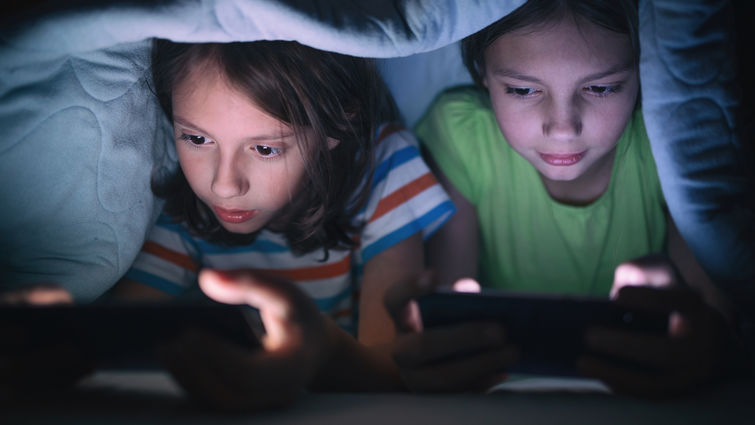
Summer is in full swing, and with school being out, many kids have hours of free time. However, while numerous indoor and outdoor activities are available, data shows that children and adolescents spend too many hours watching screens.
According to the American Academy of Child and Adolescent Psychiatry, kids between ages 8-12 in the United States spend, on average, 4-6 hours every day watching or using screens, with adolescents spending up to 9 hours.
Screen time includes watching TV, spending time on the computer, playing video games, or spending time on tablets and phones, says Allison Hensley, MD, a general pediatrician at Loma Linda University Children’s Hospital.
Pros & Cons
And although some screen time can be beneficial for entertainment, education, and generally keeping kids occupied, it’s not without its downsides.
Hensley says screen time negatively affects children and adolescents in the following ways:
- Increases childhood obesity
- Increases cardiometabolic disease — like diabetes, hypertension, and heart disease
- Disrupts sleep
- Increases mental health problems
- Promotes risky lifestyle behaviors like unhealthy food and beverage intake, digital dependency, or screen addiction
She adds that social media, particularly among older children and adolescents, can be dangerous and lead to digital dependency or screen addiction, depression, anxiety, and risks of exposure to cyberbullying, age-inappropriate and violent content, or sexual exploitation.
However, when used and monitored properly, it’s not all bad. “It can provide social support that otherwise may not be received elsewhere,” Hensley says. “Among adolescents, social media and networking sites increase feelings of connectedness among peers and can promote more diverse friendships.”
Other social media-specific benefits include:
- Opportunities for learning and education
- Entertainment
- Communication
- Improvement of academic performance by enhancing knowledge and literacy skills
How much is too much
So, the question is, how much is too much? Hensley says the American Academy of Pediatrics (AAP) recently updated its recommendations for media use.
- Avoid screen time other than video-chatting for children under 18 months of age
- Limit screen use to one hour a day for children ages 2-5
- Co-view media with your children who are ages 5 and under
- For school-age kids and adolescents, limit screen use to no more than two hours a day for recreation use — for example, not including time spent doing homework or school work
Helpful alternatives
It may be easier said than done during the summer for some parents to devise alternatives to phones or television to entertain their kids while out of school. A list of personal tasks, household chores, or other screenless activities to choose or complete before using screens may provide helpful alternatives.
Hensley suggests the following activities that could be fun and stimulating for both you and your child:
- Read or work on academic summer workbooks
- Attend summer day camps
- Journaling
- Play board games
- Have creative play sessions
- Experiment with arts and crafts
- Use building blocks or Legos
- Find a favorite outdoor activity such as bike riding, playing outside, or swimming
- Engage in real-life skills — cooking together, baking, doing household chores or repairs
Additionally, the AAP recommends creating a Personalized Family Media Use Plan, which Hensley says helps families think about media and create goals and rules that align with each family’s values.
Learning active habits while young is key
Teaching kids about an active lifestyle versus a sedentary one while they’re young, can impact the rest of their life.
The AAP recommends that kids and adolescents get at least 60 minutes of moderate-to-vigorous physical activity each day. Additionally, muscle and bone-strengthening activities should be incorporated at least three days per week.
“Children and adolescents are vulnerable and easily influenced, and the habits formed in childhood are seen to be carried forward into adulthood,” Hensley says. “Therefore, it is essential for parents to teach their children healthy habits, such as monitoring screen time use and engaging in regular physical activity.”
Loma Linda University Children’s Hospital is here to support you. Make an appointment with your pediatrician if you have questions or concerns about your child’s overall health.
